Botswana Travel Tips
BOTSWANA TRAVEL GUIDE
Botswana is considered one of the most exciting countries to visit. Explore the pristine Okavango Delta, teeming with wildlife and a plethora of birds all in a breathtaking setting. View vast herds of elephants in Chobe National Park and explore the still open spaces of the Kalahari. The sheer remoteness of being in Botswana on safari combined with the incredible game viewing and bird watching will have visitors leaving with a lifetime of memories.
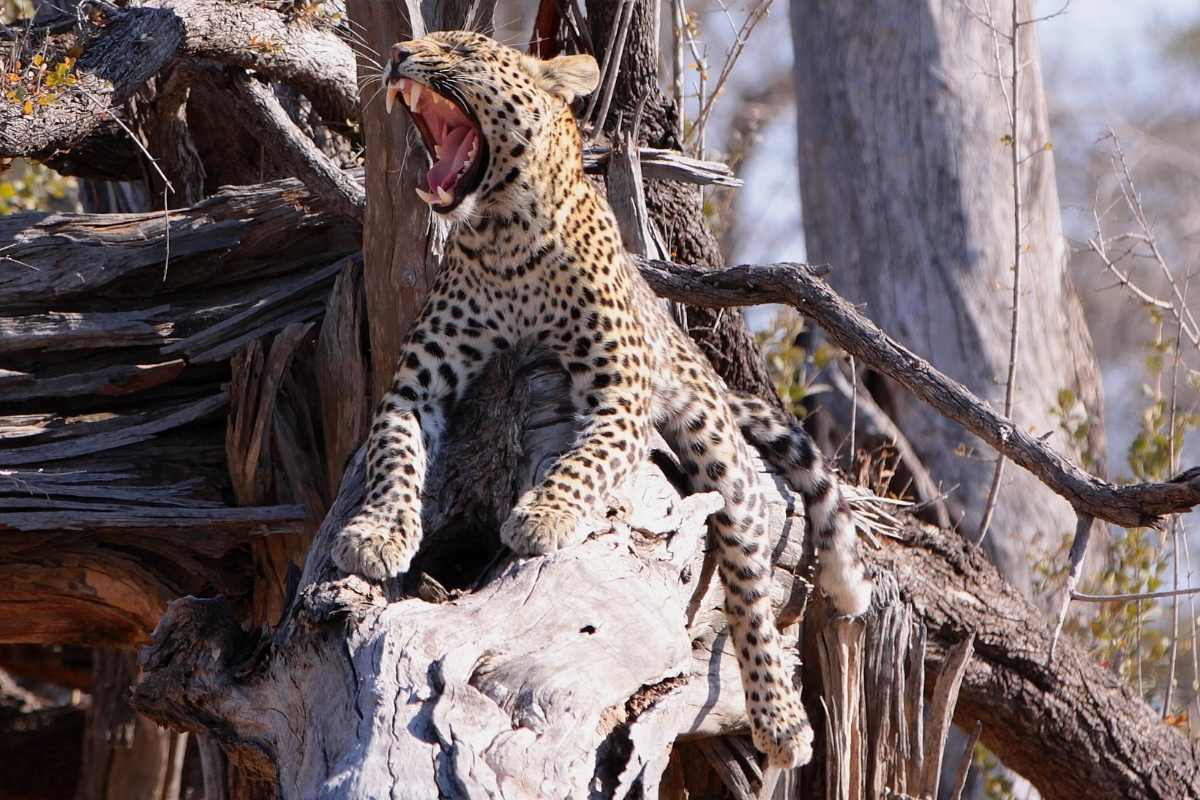
WHERE IS BOTSWANA?
A landlocked country in middle of Southern Africa, Botswana is bordered by South Africa, Namibia, Zimbabwe and Zambia.
HOW TO GET TO BOTSWANA?
The majority of Botswana safaris are fly-in safaris, which means that you will fly in light aircraft between the safari camps. The intrepid can travel by road, with a capable 4×4. Some of the Okavango Delta camps are only accessible by light aircraft which is why the fly-in safari is the most popular option.
The North West of Botswana is the main safari area and the gateway is the town of Maun. The only international flights to Maun are from Johannesburg, which connects with most of the international arrivals from Europe and the Middle East. The northern town of Kasane, right at the border with Zimbabwe and Zambia, is the other main airport to access Botswana. There are daily flights from Johannesburg to Kasane.
Victoria Falls is an hour away by road which links perfectly for an extension to Victoria Falls, a Zimbabwe or Zambia Safari. Botswana’s capital city is Gaborone, however to start your safari to Botswana you will need to be in Maun or Kasane.
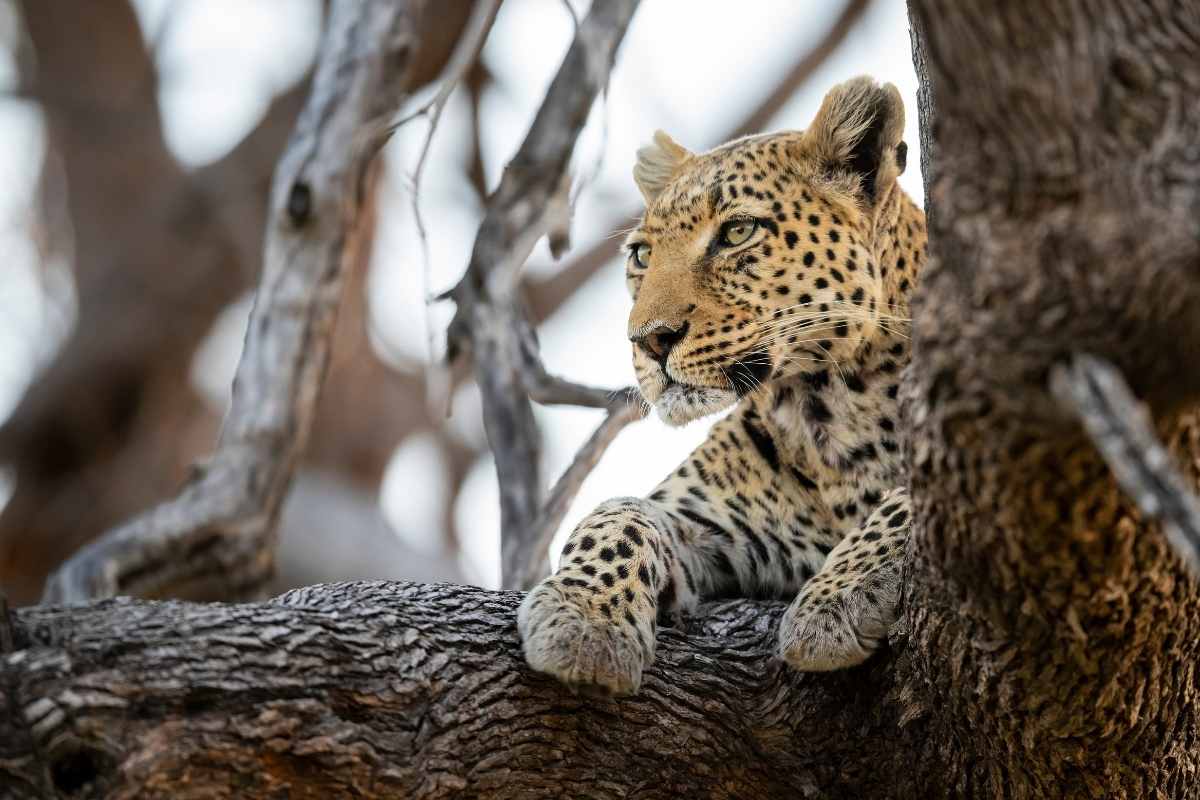
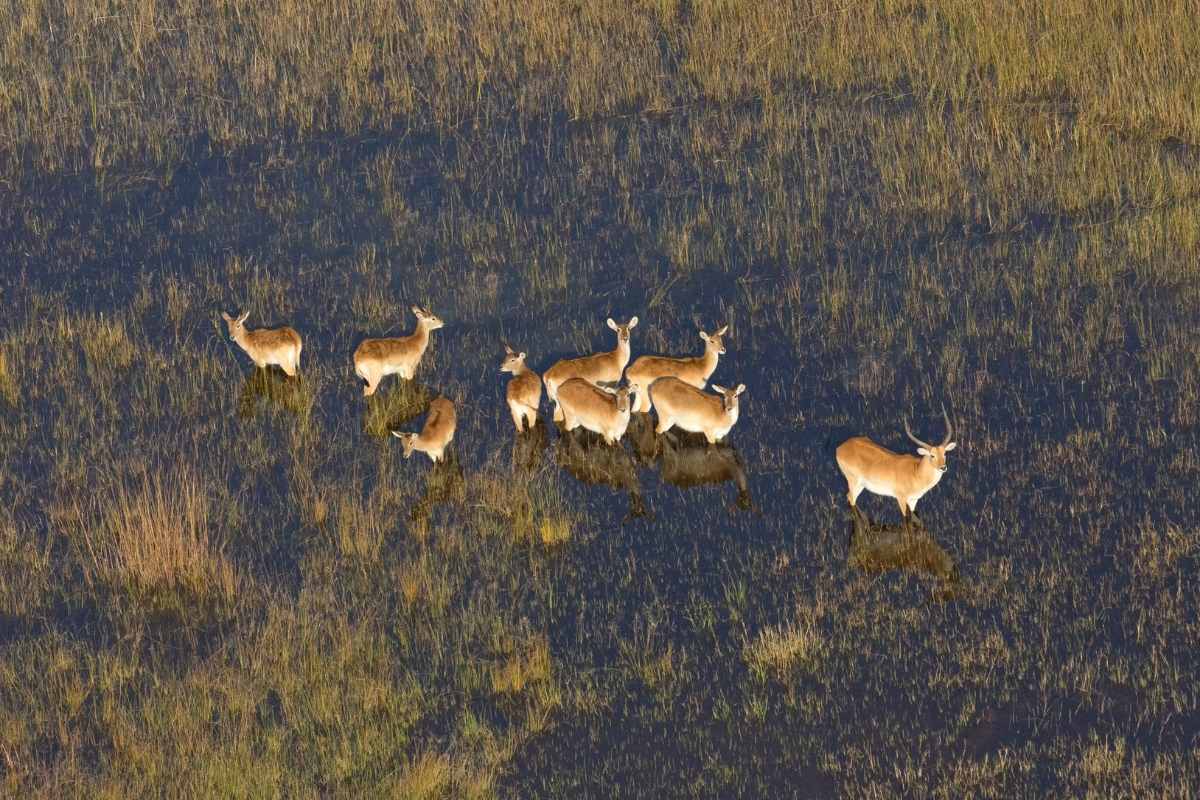
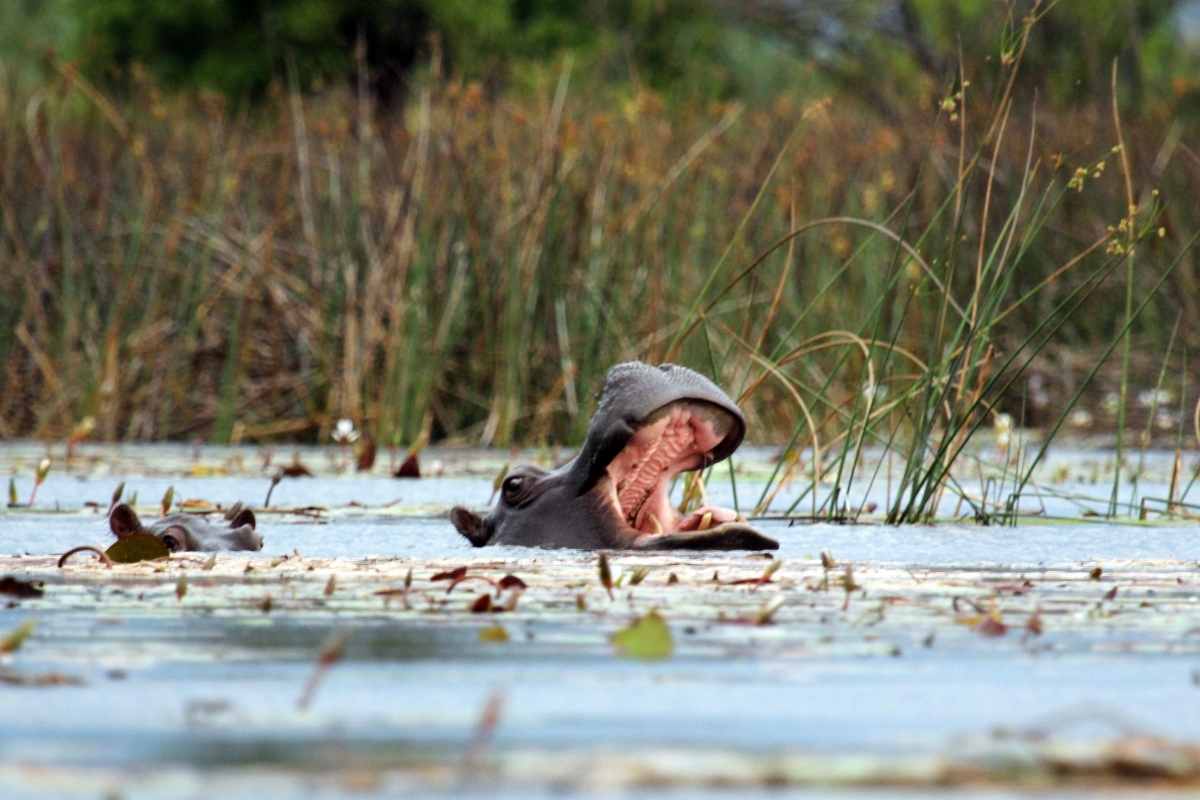
PRIVATE CONCESSION OR NATIONAL PARK?
With both private concessions and national parks dominating the landscape of the Botswana safari circuit, a common question is which type of area to choose? Basically, the National Parks are government-owned and the private concessions are, well, privately owned. The general conservation rules are the same and they have similar flora and fauna and landscapes.
National Parks are open to all visitors, anyone staying in a safari lodge, mobile camping trip or self-catering campsite. Day visitors from Maun or Kasane and people who stay just outside the park are all able to self drive through the area. No off-road driving or walking is permitted and you can only be in the park between sunrise and sunset. There are no restrictions on the number of vehicles on a sighting either. While there are some gorgeous luxury safari lodges in the national parks, they are geared to more budget camping trips.
Private Concessions in Botswana tend to be off the beaten track, making self-drive tricky. Most lodges are accessible by light aircraft. There are strict limitations on tourist numbers in the private concessions, offering an authentic and less crowded safari experience. Private reserves do not have et times, so you can enjoy longer on sightings, night drives and walking safaris. The lodges are spread out and if you do happen on another vehicle, the access to a wildlife sighting is monitored so there are not too many people near the sight. Safari lodges tend to be on the more luxurious side, offering a truly sublime safari experience.
How to decide? If you are coming from Victoria Falls, then the Chobe National Park is an excellent starting point. Some safari camps are part of a portfolio of lodges that have camps in both private and public, so why not combine the areas for an all-round view of Botswana. If you want intimate and exclusive then the private concessions of Botswana are the way to go.
SAFARI CAMPS AND MOBILE CAMPING
Most of Botswana is under canvas, with a light footprint. Expect en-suit bathrooms, some with the traditional safari bucket shower and others with full baths. The standard of guiding at all the Botswana lodges is very high and as we know, the game viewing is amazing all over.
Botswana has some of the most gorgeous and opulent safari lodges and camps in Africa. Expect copper ball and claw baths with views to inspire, decadent meals, impeccable service and outstanding guiding at these lodges. Lodges like Xigera, Mombo and DumaTau are at the very top of the list.
There are many lodges that offer a more traditional and comfortable safari, with all the creature comforts you may look for. The Desert & Delta Safaris range of camps offers a luxury safari experience across both national park and private reserve.
Mobile Camping trips are a wonderful way for small groups to visit Botswana. Travel in a 4×4 with your guide through the Moremi & Chobe, while glamping in private campsites. These run from budget tours with small dome canvas tents and a DIY approach to a luxurious sit-back-and-relax luxury glamping experience.
WHAT DOES A BOTSWANA SAFARI COST?
It is important to note that Botswana is not the most affordable destination in Africa, however the reward is great. Botswana has a low-impact, low-density, high-value tourism model. If you are on a budget then consider travelling in green or shoulder season or perhaps join a small group mobile camping tour, where you have your own safari tent, which is ensuite and drive between campsites with your guiding team. And unless you have your heart set on Botswana, think about one of the other amazing safari areas in Africa like the Masai Mara in Kenya or the Kruger National Park in South Africa.
Almost all the safari camps offer a fully inclusive rate – all meals, all game drives, tea and coffee and local drinks. The high-end safari camps include top-shelf liquor as well. Park fees, laundry and airstrip transfers are also included. The guide below is in US$ and per person sharing. single supplements are generally waivered in the low and shoulder seasons.
4 star comfortable: Low season – $400-$600 / High season $750-$990
4 star luxury: Low season – $500-$800 / High season $850-$1300
5 star luxury: Low season- $800-$1000 / High season $1300-$1600
5 star premier: Low season – $900-$1200 / High season $1500-$2200
Mobile camping can run from $500 a night in low season to $1000 a night in high season
To summarise an 8-night safari in peak season with premier camps will cost upwards of $16000 per person, while an upper 4 star camp safari from US$7000 per person. The same trips in low season would be $10000 for the premier camps and from $4800 for the upper 4 star camps.
There is a major difference in price during the seasons and with careful planning you can take advantage of this.
Green Season – December to March (excluding the Festive season)
Shoulder Season – April to June (sometimes only to May) and November (and sometimes December)
Peak Season – July to October ( a few companies have a super peak period of July and August at a higher price tag)
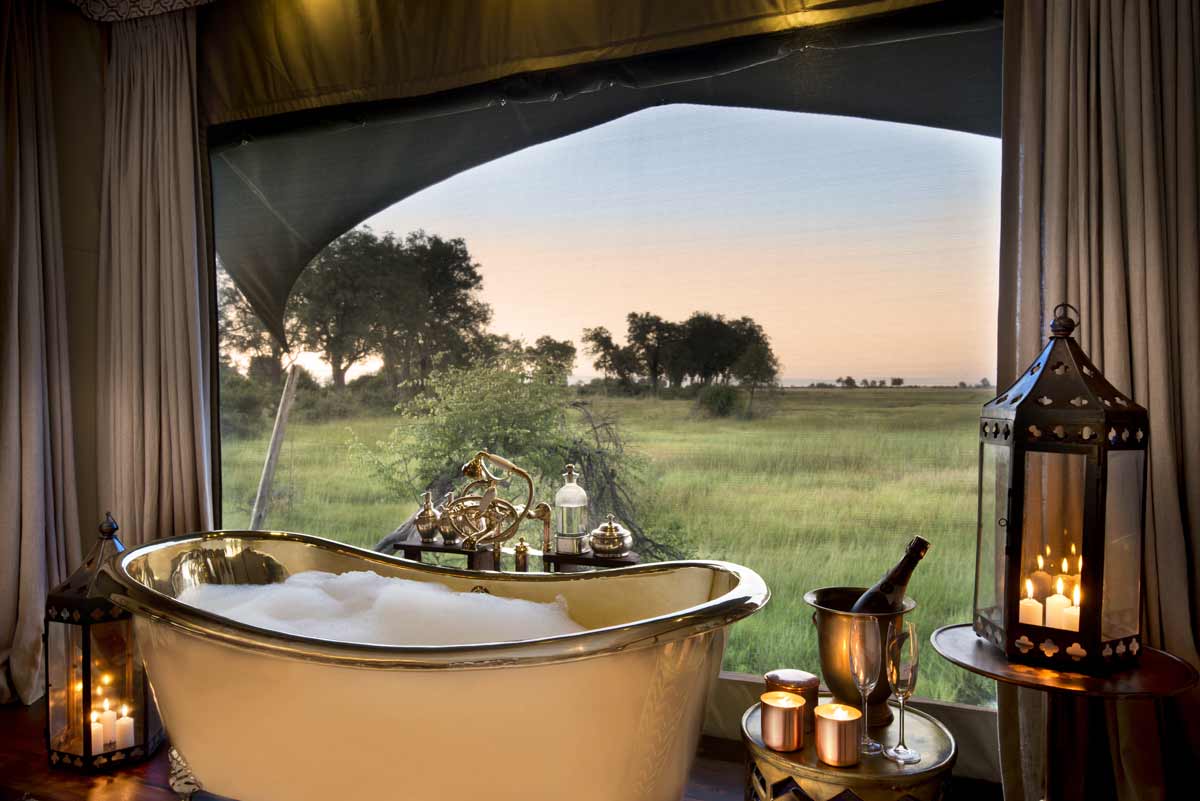
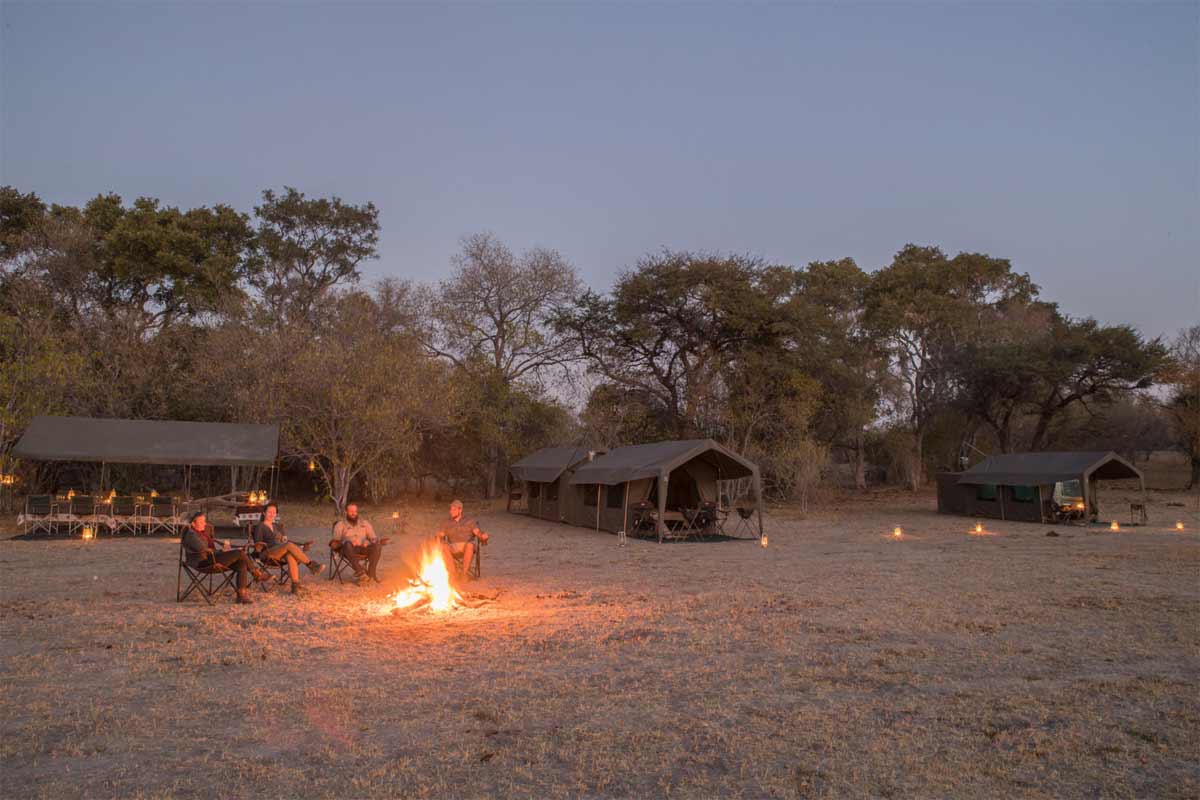
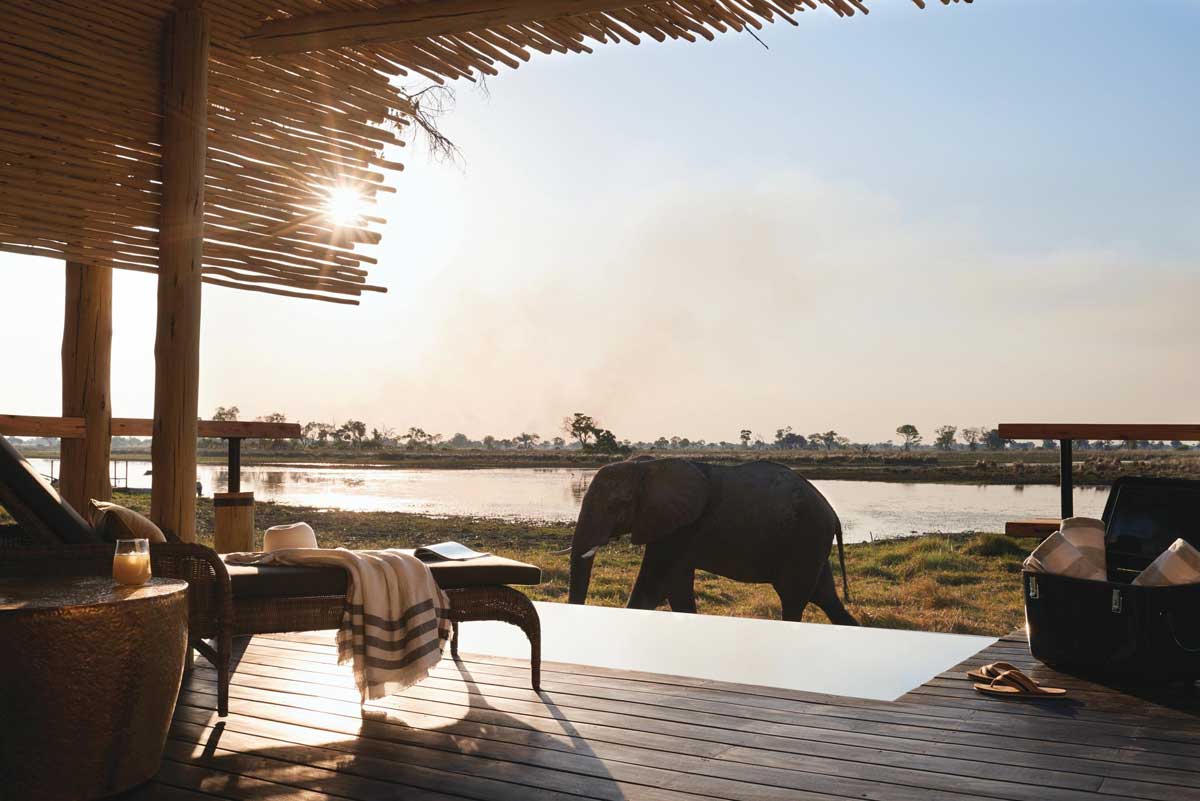
WHERE TO GO ON A BOTSWANA SAFARI?
There is a wide variety of choices for your safari to Botswana. It may seem daunting at first, but that is why we are here! To help you unravel where you want to go and what you want to see.
The Okavango Delta
One of the most beautiful safari places in Africa, the Okavango Delta is a must-visit on any Botswana tour. In the Delta, you will find the Moremi National Park and numerous private reserves. Boat cruises, game drives, walking safaris, mokoro( canoe) trip and more are the highlights of a visit to the Okavango Delta. Well known areas like Chief’s Island with camps like Mombo Camp and Chiefs Camp are a haven for wildlife.
The Moremi National Park
Covering part of the Okavango Delta, The Moremi National Park also has a vast land area that is often very picturesque. Offering the classic game drive and boat cruises, the Moremi is a great area to spot the Big 5.
Kwando Concession, Linyanti area & Selinda Concession
Three pristine game viewing areas, Kwando, Linyanti and Selinda are vast and wild areas.
Kwando Safaris operates two safari lodges in the Kwando Concession, well known for wild dog, cheetah, lion, leopard and other excellent game viewings. The Linyanti concession borders the Chobe National Park and the Linyanti River, with excellent game viewing in the dry season especially. The Selinda Concession has some beautiful lodges and fantastic game viewing. All three areas offer beautiful vistas and brilliant sunsets.
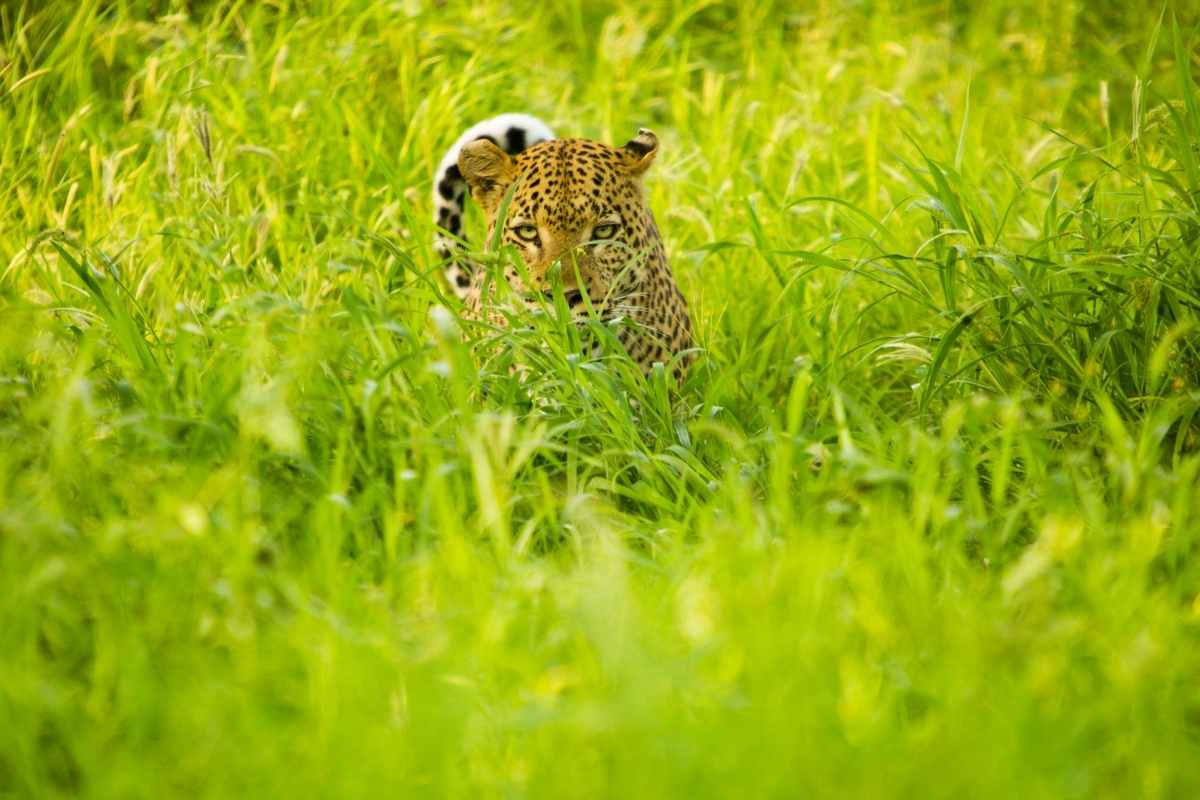
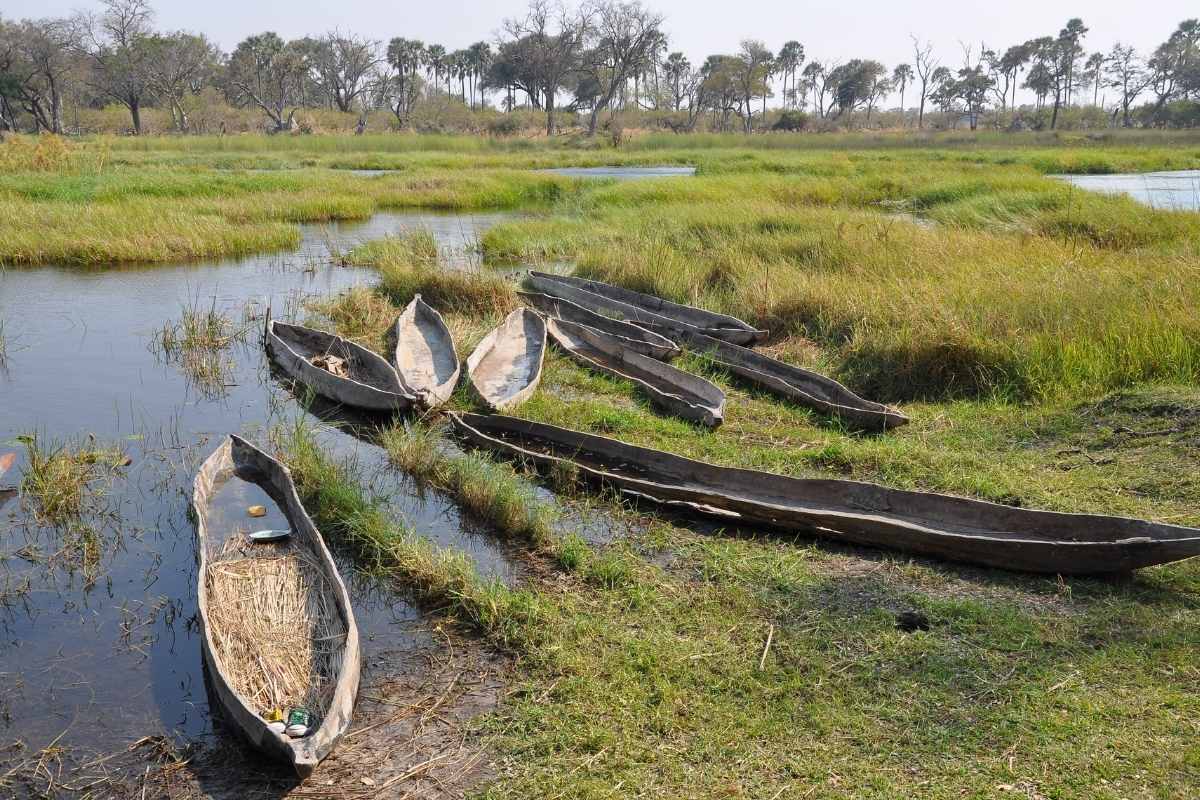
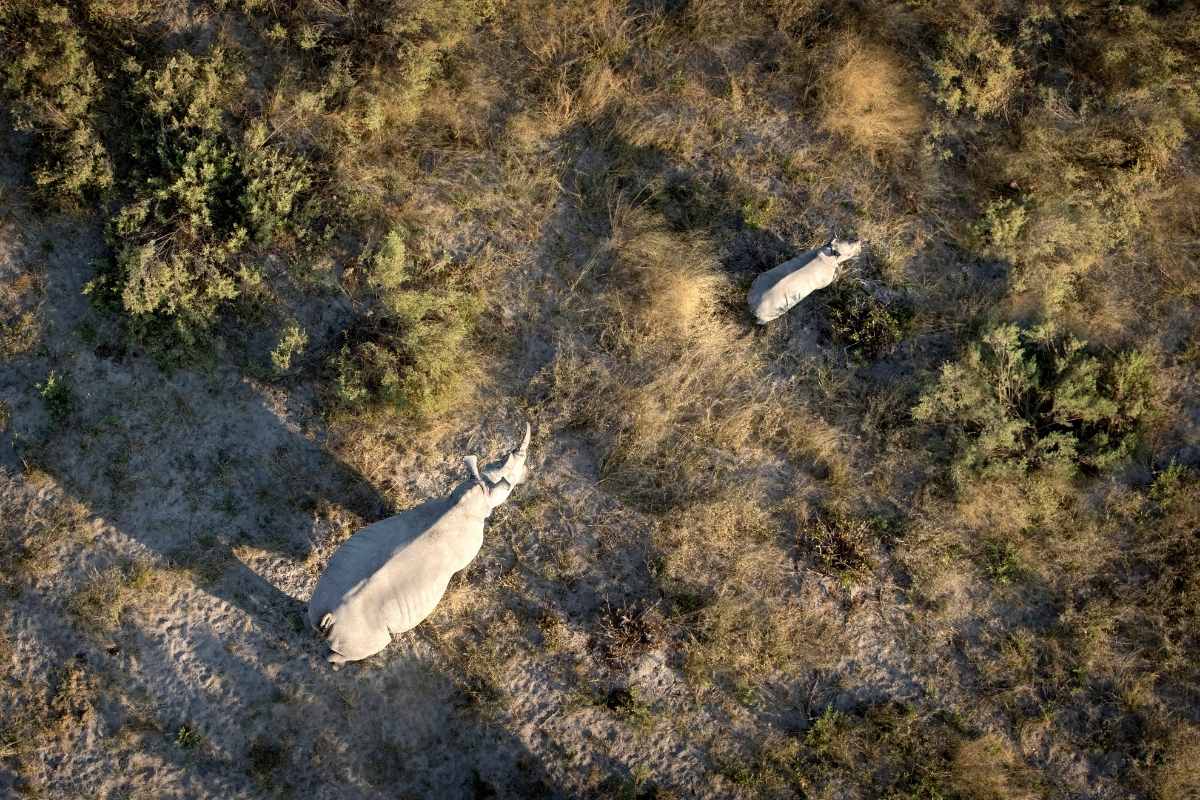
Savuti Area
In the south of Chobe National Park lies the Savuti Marsh Area. Bordering the Linyanti, Okavango Delta and Khwai, the Savuti (or Savute) is well known for big game and predator sightings including hyena, lion and leopard. Waterholes supply life bringing water to the animals as the erratic Savuti Channel cannot be relied upon, having only flowed a handful of times in the last few decades.
Khwai Community Concession area
Owned and run by the Khwai community. the Khwai concession borders the Moremi and Chobe National Parks. The Khwai River rarely dries up providing water throughout the year for a plethora of aniamls.
Chobe National Park
Sometimes overlooked, the Chobe National Park is a lovely area to visit with excellent predator sightings and great for birding. Enjoy cruises along the Chobe River and in the dry winter months, there are massive herds of elephants to view. A perfect place to visit between Victoria Falls and the rest of your trip to Botswana.
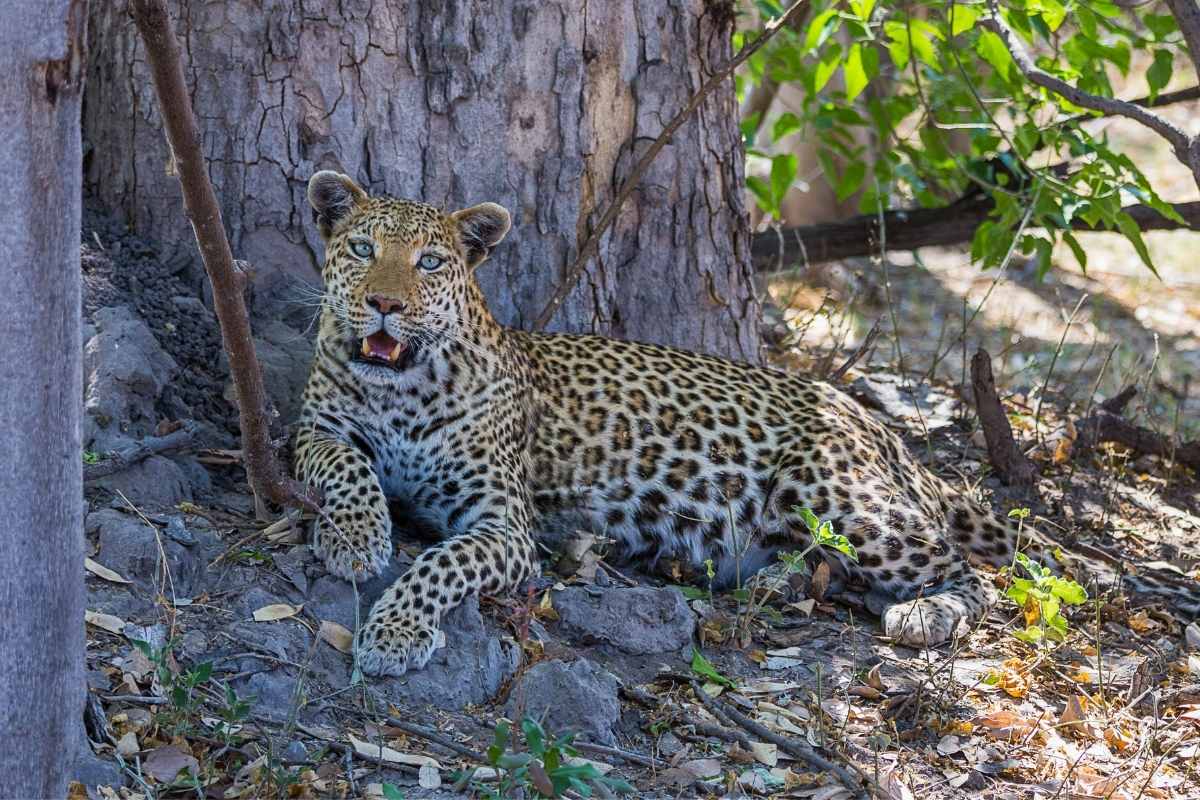
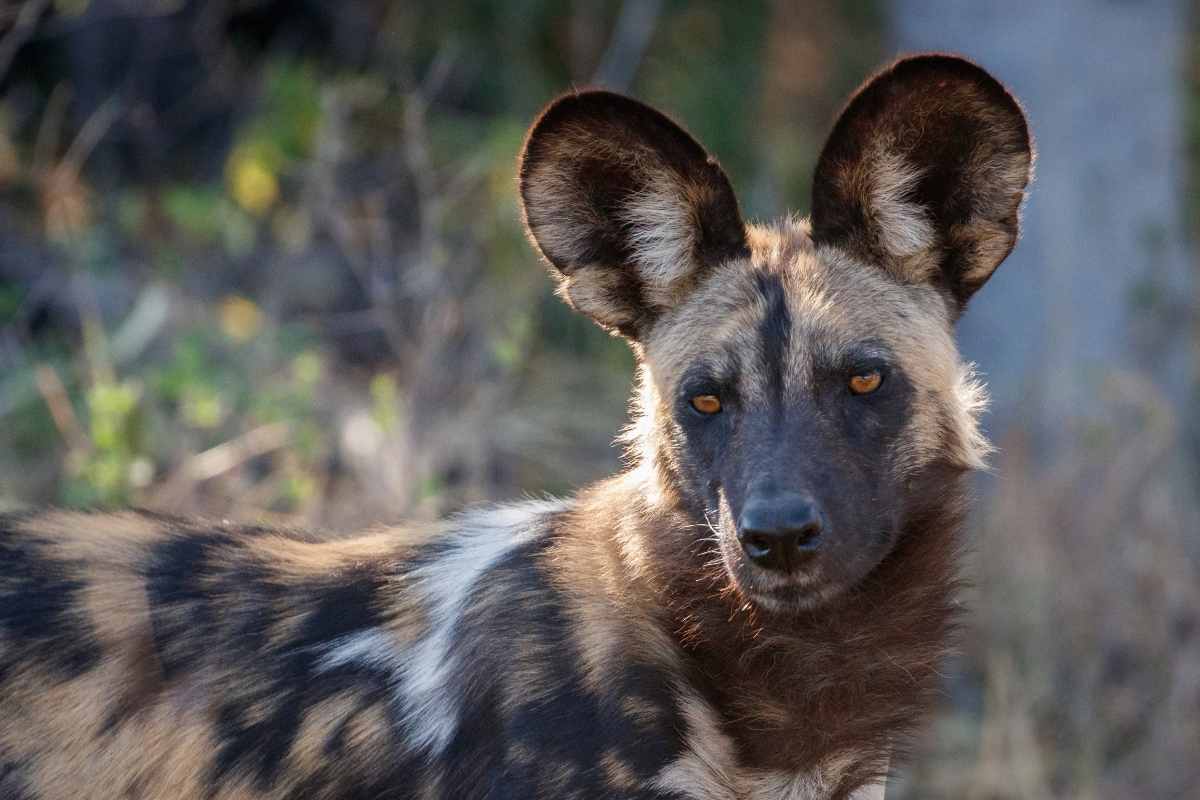
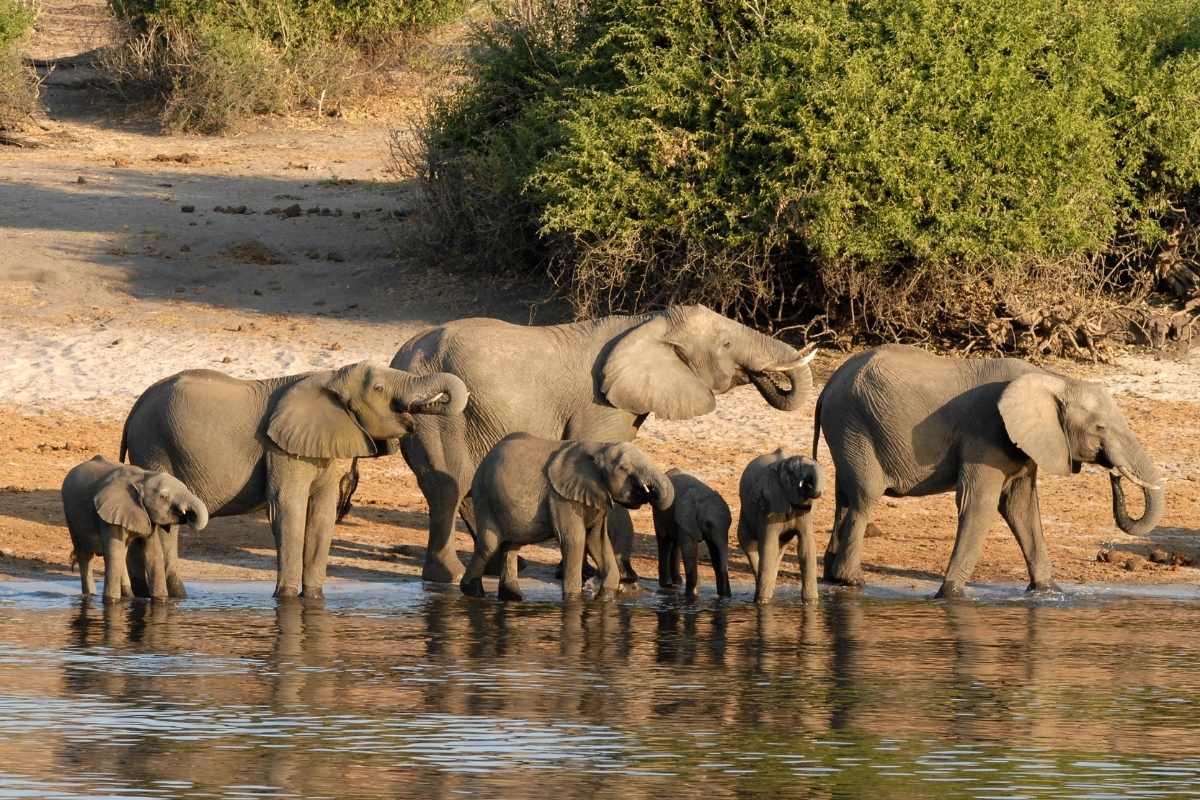
Makgadikgadi Pan & Nxai Pan
The Makgadikgadi Pans National Park is home to large salt pans. After the summer rains, the pans fill up and are transformed from a dry, parched landscape to a green wonderland with many birds and attracting thousands of animals. Large herds of Zebra can be found here. Neighbouring Nxai Pan National Park has smaller pans and unlike Makgadikgadi Pans, a waterless fossile pan covered in grass. Huge baobabs line the pan edges and the scenery of this park is stunning.
Central Kalahari Game Reserve
In the middle of Botswana is the Central Kalahari Game Reserve, a massive reserve with stunning desert scenery. The Kalahari black-maned lions and cheetahs are found here, amid herds of springbok and oryx.
Mashatu Game Reserve & Northern Tuli Game Reserve
Mashatu Game Reserve is a large private reserve in the south of Botswana, bordering South Africa. Outstanding year-round game viewing, with eye-level hides at active hides. Access is generally through Johannesburg however there are a few flights a week connecting to Maun and the northern Botswana circuit. Mashatu is part of the Northern Tuli area. Outstanding leopard and elephant sightings can be seen throughout the area.
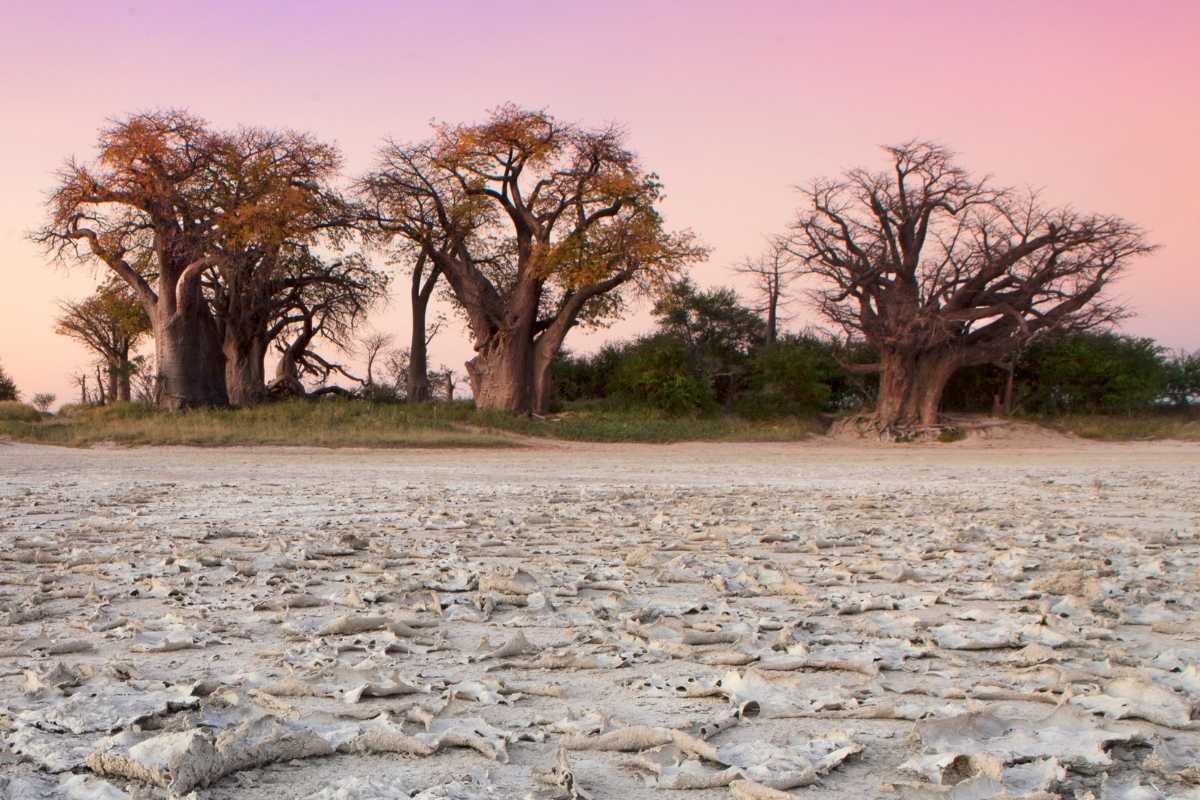
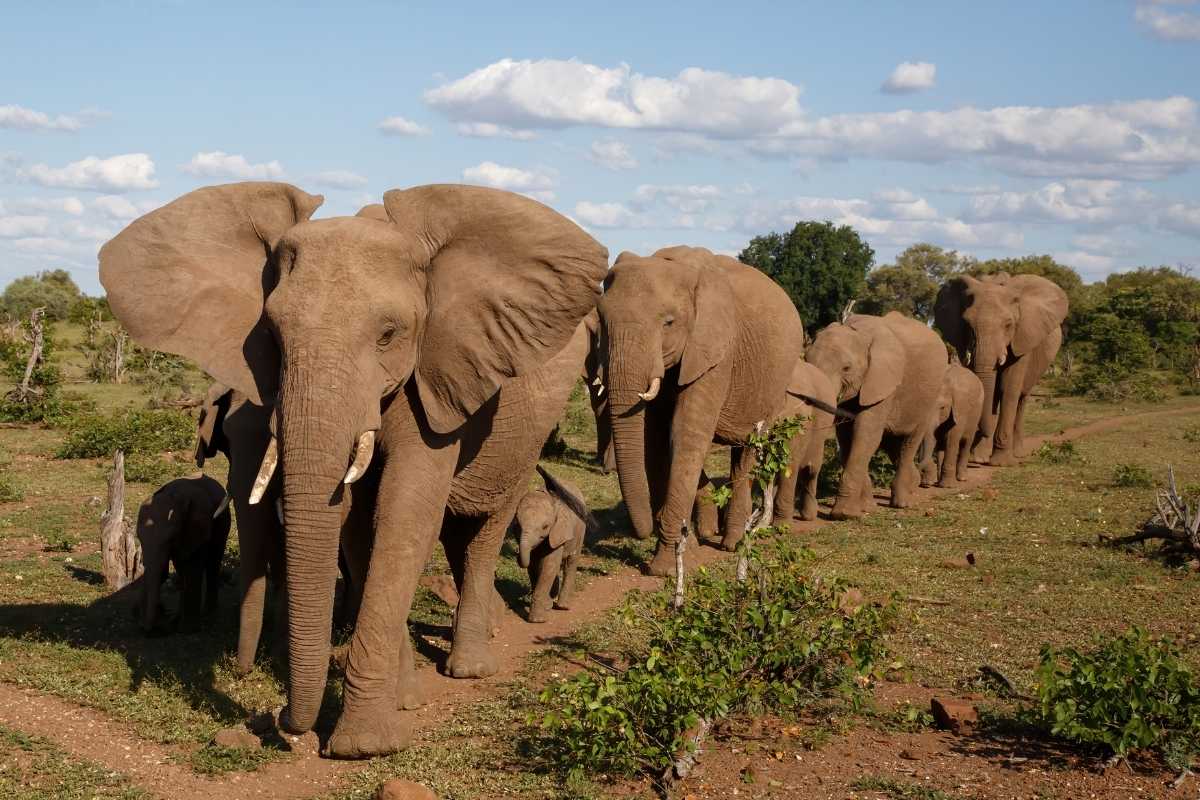
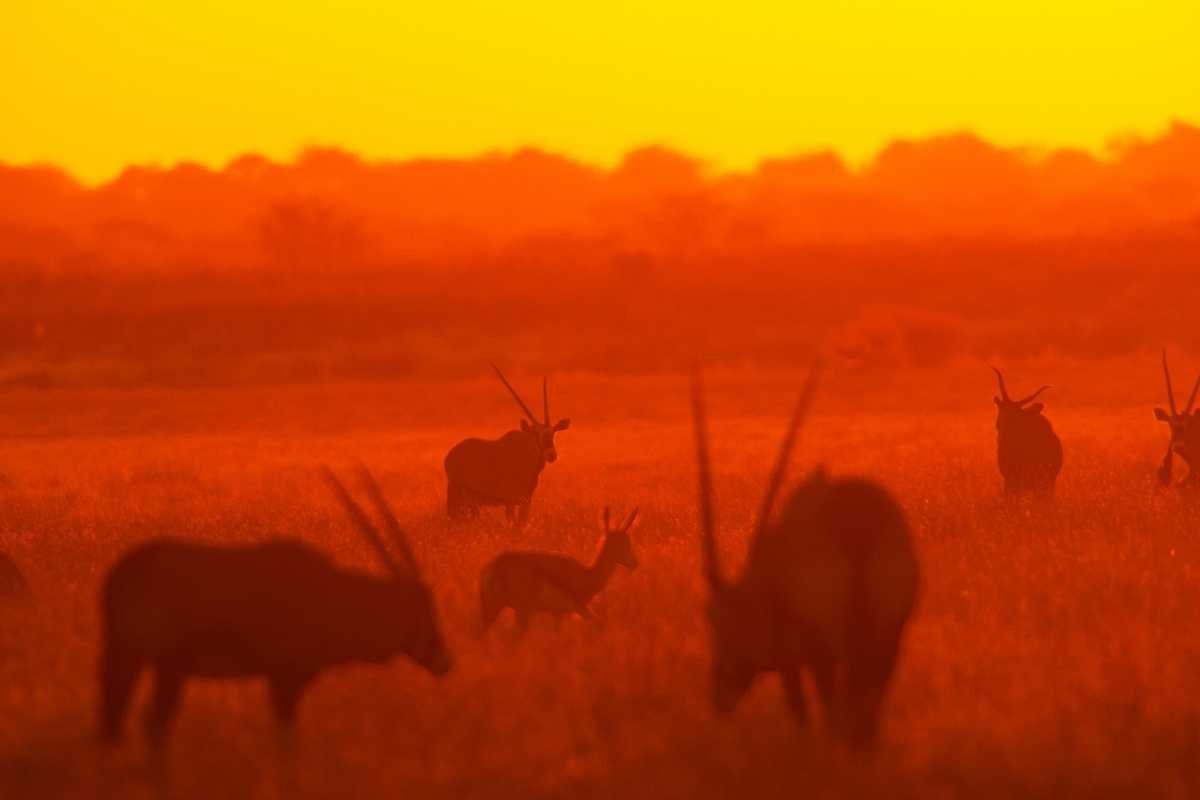
WHEN TO GO ON A SAFARI TO BOTSWANA?
You can enjoy a safari to Botswana at any time of the year as most camps remain open. The safari in Botswana is dictated by rainfall and water levels. The local rains fall in from late December through to March. This rain fills up all the local pans, creating pockets of water for animals to drink from. This time coincides with the low or green season in Botswana. Often called the Green Season as the dry Kalahari bush turns green.
The green season heralds the arrival of thousands of migratory birds for the summer which in turn draws avid twitchers to Botswana! The green season is a favourite of photographers, with the lush green bush providing a stunning backdrop to their photos. During shoulder season the surrounding bush starts to dry out, which in turn makes it easier to spot the animals as they do tend to gravitate to water sources. The high season starts from late June, in the middle of the winter and brings animals to the last remaining water sources – rivers, the Delta and deeper waterholes. The bush is dried out and makes spotting easier.
Booking Seasons in Botswana
Botswana has three distinct booking seasons which do coincide with the annual weather patterns.
Low or Green Season runs from January to March and December. (Excluding the Christmas and New Year period)
Shoulder Season from April to the end of June, although some safari lodges have started needing their shoulder season at the end of May. November is also shoulder season
High Season runs from July till the end of October
The cost of your Botswana safari will differ during these seasons.

Weather in Botswana
Botswana is sub-tropical with light rainfall and frequent droughts. Most of the country is the Kalahari desert which does affect temperatures. Day time in summer can be very hot, especially in late September and October, before the local rainfall starts. Winter nights can be on the cold side, but by the middle of the day, you are swimming! Rainfall is typically in afternoon thundershowers, not days of rain like some countries. This does produce some spectacular rainbows and skies.
Below are the weather charts for Maun, the gateway to the Okavango Delta and the Bostwana Safari circuit, and Kasane, the town at Chobe National Park that is an hours drive from Victoria Falls.
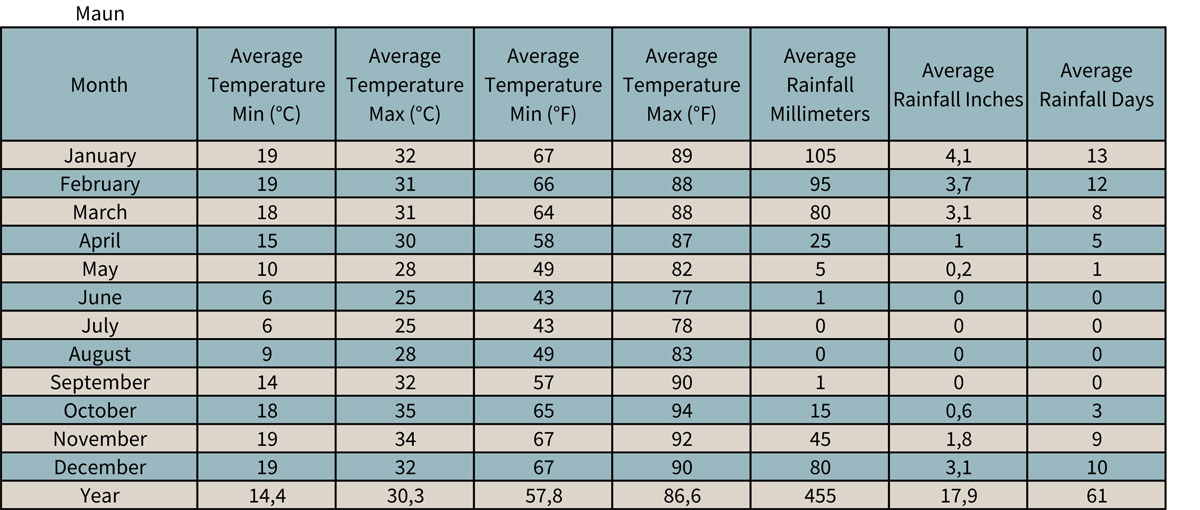
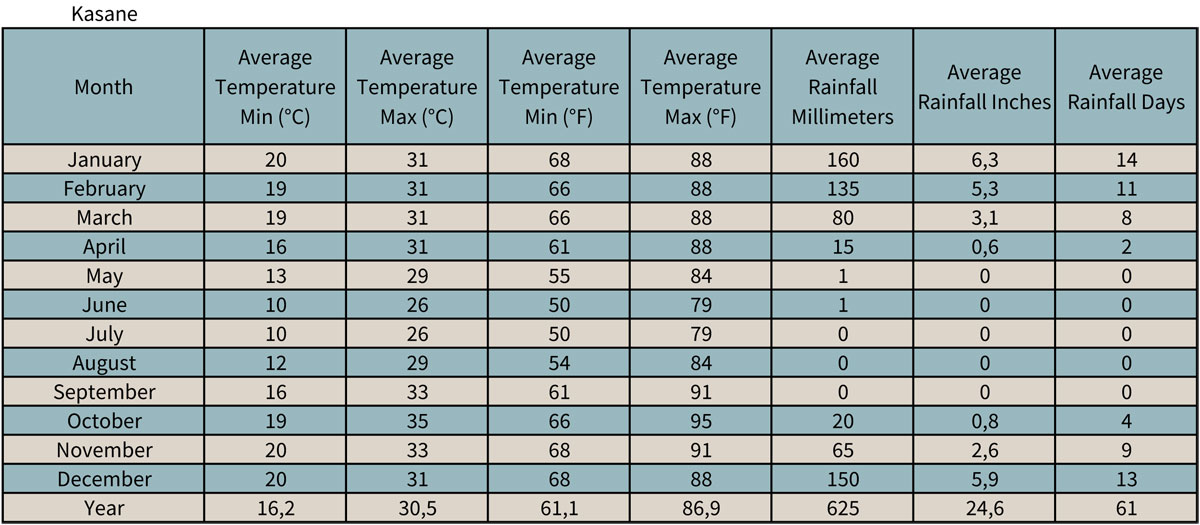
WEIGHT & LUGGAGE RESTRICTIONS ON A BOTSWANA SAFARI
As most of our Botswana safaris are fly-in trips, there are some important notes on luggage restrictions. All flights within Botswana are in light aircraft like Cessna Caravans. The luggage hold is small and you will need to pack accordingly. Most of the airlines like Wilderness Air, Mack Air, SafariAir and Moremi Air have fairly standard dimensions for soft bags only, with no frames or rigid structures, wheels only if they are not part of a solid frame – just the wheels and collapsable handle.
The maximum dimensions per bag are 30 cm (11.8 inches) wide x 35 cm (13.8 inches) high and 70 cm (27.5 inches) long. The total weight is 20 kg (44 lb) per person and includes your hand/carry-on luggage as well and any camera gear you travel with. This restriction is the same in Zimbabwe and Zambia but not in East Africa.
Most safari lodges include laundry and provide amenities like shower gel, insect repellant, moisturiser. You will seldom need any formal attire on safari, unless you are staying at a luxury city hotel or on one of the amazing train trips of Southern Africa, like Rovos Rail. If you are flying in and out of Botswana through the Maun Airport there is a luggage storage option with the airline. There is also a storage facility at the Johannesburg Airport. Excess luggage can be purchased for the light aircraft should you have loads of gear!
You will notice on your booking form that there is a question about your weight. We provide this to the charter airlines so they can ensure each flight is within safety regulations for operation. Generally, the maximum is about 100kg (220lb) body weight per person, and there is a surcharge on some flights.
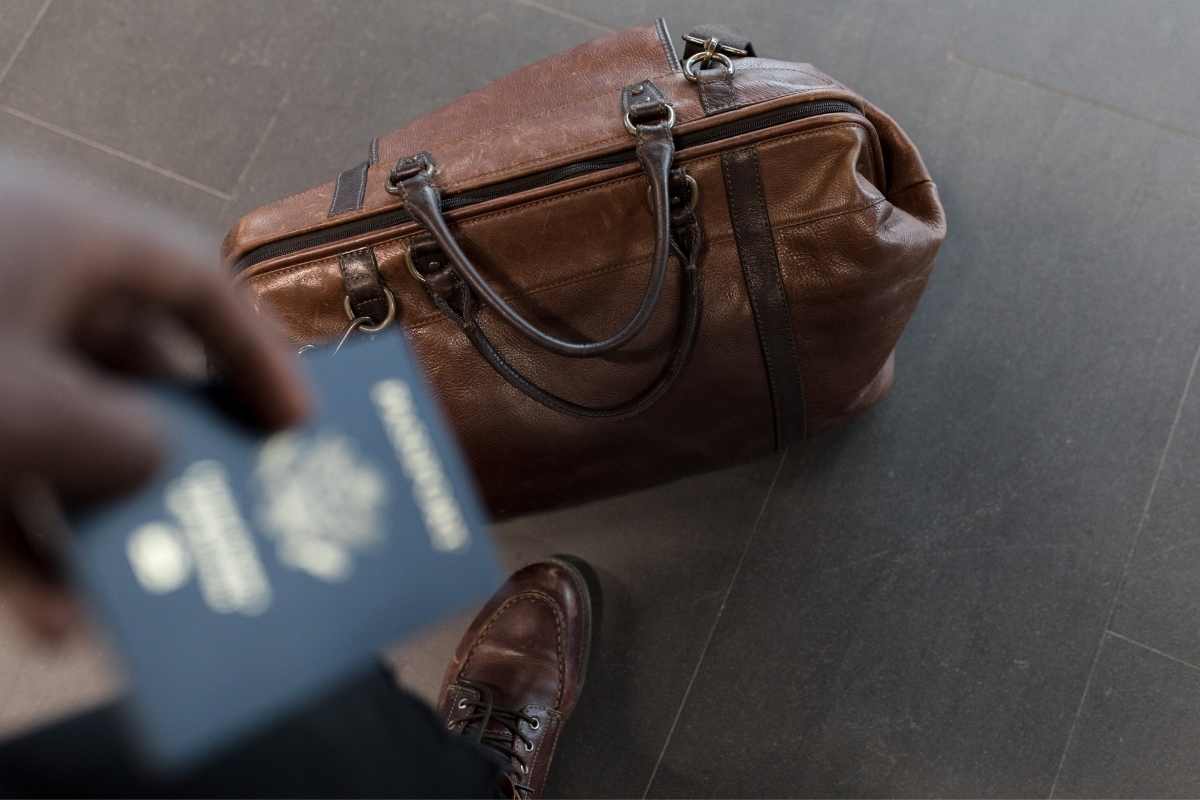
VISAS TO BOTSWANA
All visitors must travel with a passport, that is valid for 6 months after you return home. There needs to be at least 2 blank pages in your passport, more if you are visiting multiple countries. Many people including the USA, UK and most of Europe do not need a visa to visit Botswana. This list does change so it is imperative to check with your local Embassy of Botswana first.
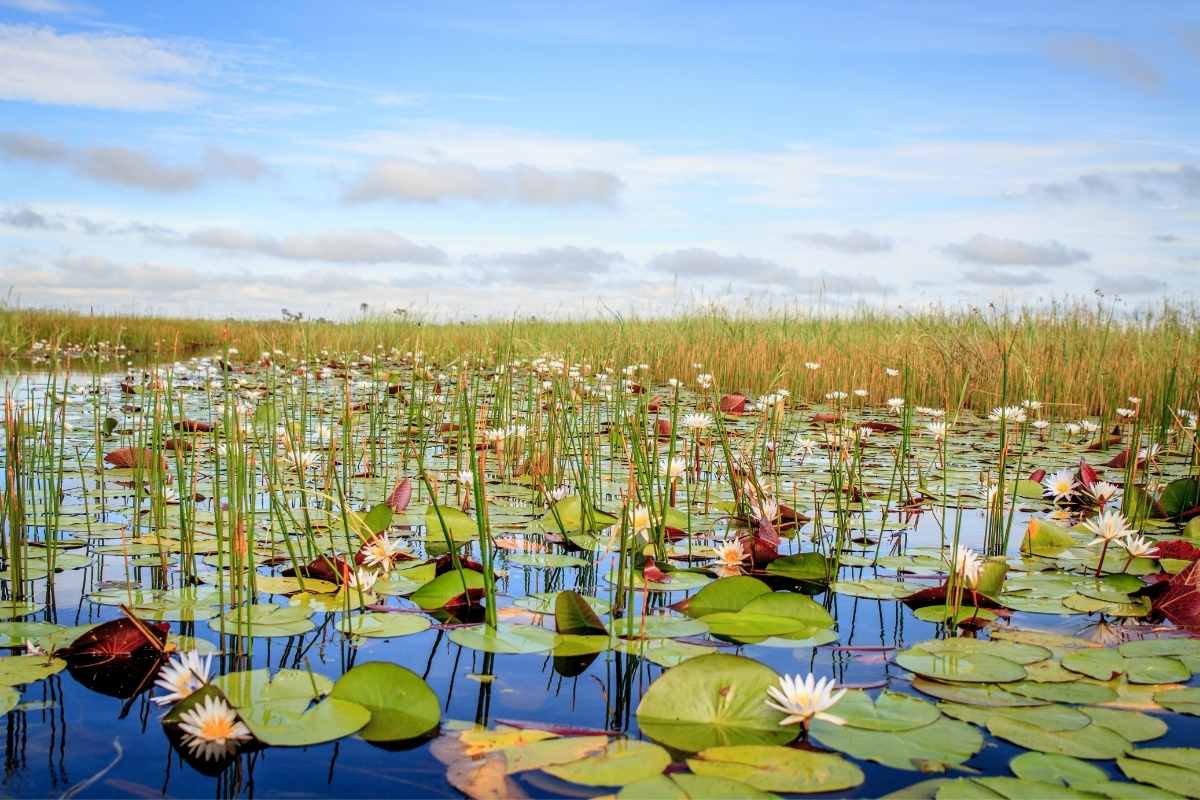
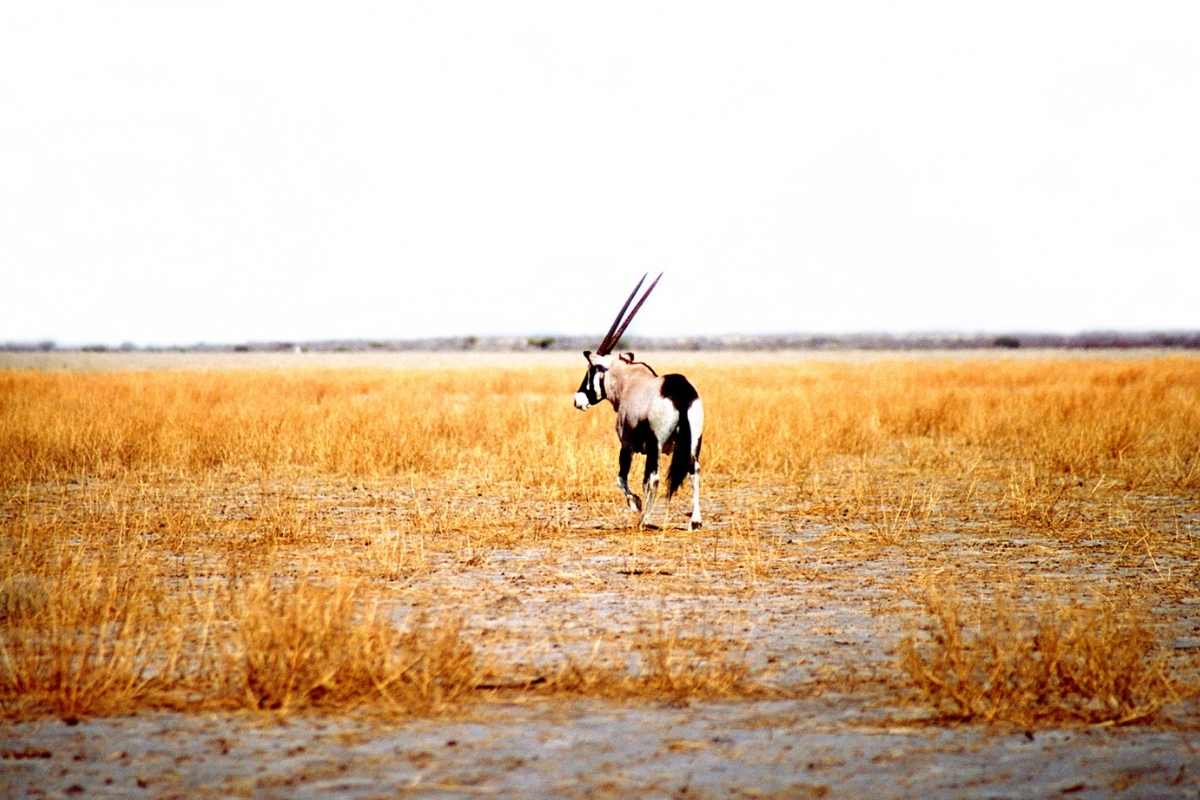
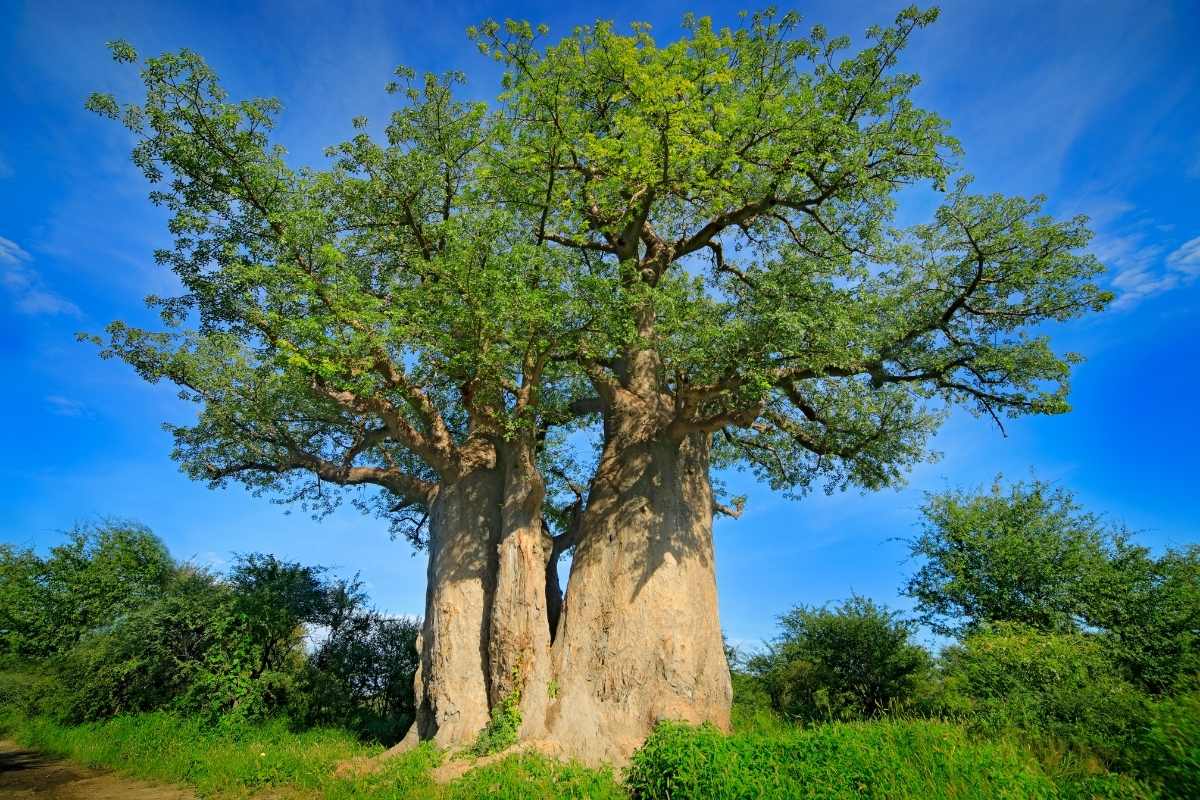
Experience luxury Botswana safaris in a land of dramatic contrasts, from the crystal-clear waters of the Okavango Delta to large elephant herds in Chobe.
